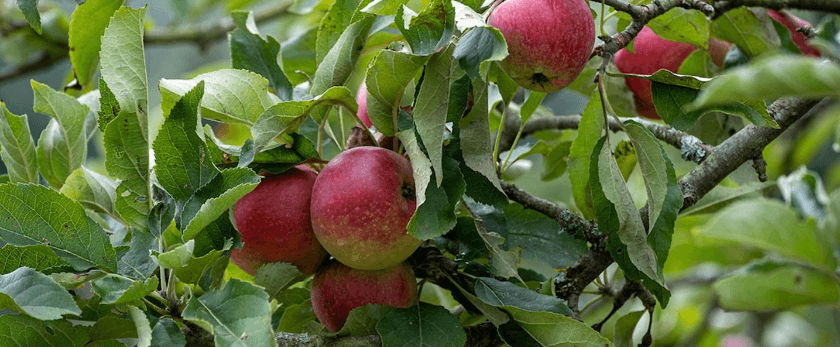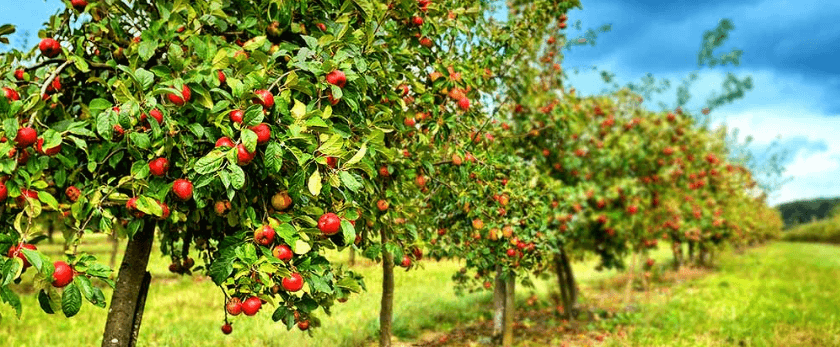Apples are not only a delicious and versatile fruit, but they are also a symbol of health and sustainability. Growing your own apples is not only a rewarding experience, but it also allows you to have control over the quality and sustainability of your food. In this article, we will discuss the steps to successfully grow apples in an eco-friendly manner.
How to Care for Your Apple Trees
Watering
Water is essential for the growth and development of apple trees. However, overwatering can lead to root rot and other diseases. It is important to water your apple trees deeply and infrequently, rather than shallowly and frequently. This encourages the roots to grow deeper into the soil, making the tree more resilient to drought.
The frequency of watering will depend on the climate and soil conditions. In general, apple trees should be watered once a week, providing 1-2 inches of water. During hot and dry periods, you may need to water more frequently.
Light
Apple trees require full sun to thrive. They should be planted in an area that receives at least 6-8 hours of direct sunlight per day. If your area has hot summers, it is best to provide some shade for the tree during the hottest part of the day.
Soil
Apple trees prefer well-drained, loamy soil with a pH level between 6.0-6.5. If your soil is too acidic, you can add lime to raise the pH level. If it is too alkaline, you can add sulfur to lower the pH level. It is important to test your soil before planting to ensure it is suitable for apple trees.
Fertilizer
Apple trees require regular fertilization to ensure healthy growth and fruit production. It is best to use organic fertilizers, such as compost or manure, as they are more sustainable and do not harm the environment. Fertilize your apple trees in the early spring before new growth appears and again in the fall after harvest.
Pruning
Pruning is an essential part of apple tree care. It helps to shape the tree, promote healthy growth, and increase fruit production. Pruning should be done in the late winter or early spring while the tree is still dormant. Remove any dead, damaged, or diseased branches, as well as any branches that are crossing or rubbing against each other. It is also important to thin out the branches to allow for better air circulation and sunlight penetration.

What is the Best Time to Grow Apples?
The best time to grow apples is in the fall or early spring. This allows the tree to establish its root system before the hot summer months. It is important to plant your apple tree in a location that is protected from strong winds and receives plenty of sunlight.
Common Problems with Apple Trees
Pests
Apple trees are susceptible to a variety of pests, including aphids, mites, and codling moths. To prevent pest infestations, it is important to keep your tree healthy and well-maintained. You can also use natural pest control methods, such as introducing beneficial insects or using organic pesticides.
Diseases
Apple trees are also prone to diseases, such as apple scab, powdery mildew, and fire blight. To prevent these diseases, it is important to keep your tree well-watered and properly pruned. You can also use organic fungicides to control these diseases.
Fruit Thinning
Apple trees often produce more fruit than they can support, resulting in small and poor-quality apples. To prevent this, it is important to thin out the fruit in the early stages of development. This allows the remaining fruit to grow larger and healthier.
Responsible Disposal Methods for a Sustainable Future
When it comes to growing apples, it is not only important to focus on sustainable cultivation methods, but also on responsible disposal methods. Here are some tips for disposing of apple waste in an eco-friendly manner:
- Compost: Apple peels, cores, and other organic waste from apple trees can be composted to create nutrient-rich soil for your garden.
- Mulch: You can also use apple leaves and branches as mulch for your garden. This helps to retain moisture in the soil and suppress weed growth.
- Donate: If you have an abundance of apples, consider donating them to a local food bank or community organization.
- Recycle: If you have plastic or other non-organic materials from apple packaging, make sure to recycle them properly.
By following these disposal methods, you can reduce waste and contribute to a more sustainable future.
Conclusion
Growing apples in a sustainable and eco-friendly manner is not only beneficial for the environment, but it also allows you to have control over the quality and sustainability of your food. By following the tips outlined in this article, you can successfully grow your own apples and contribute to a greener, more eco-friendly lifestyle. Remember to care for your apple trees by providing adequate water, sunlight, and nutrients, and to dispose of any waste responsibly. Happy growing!










